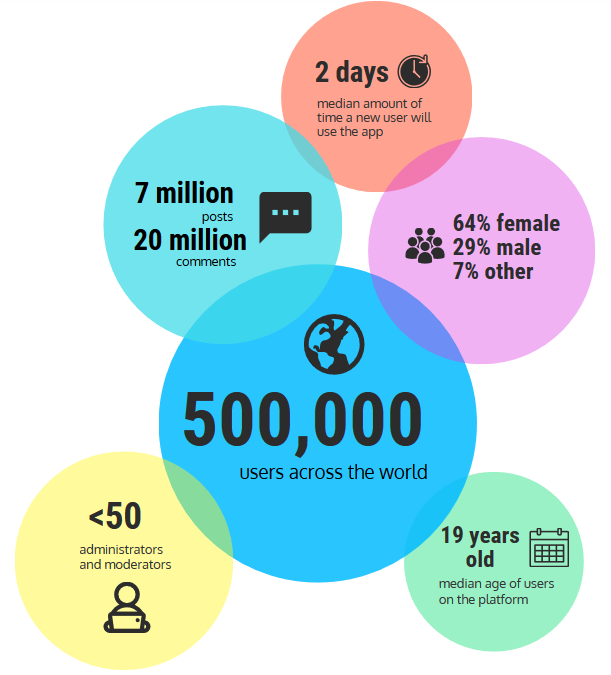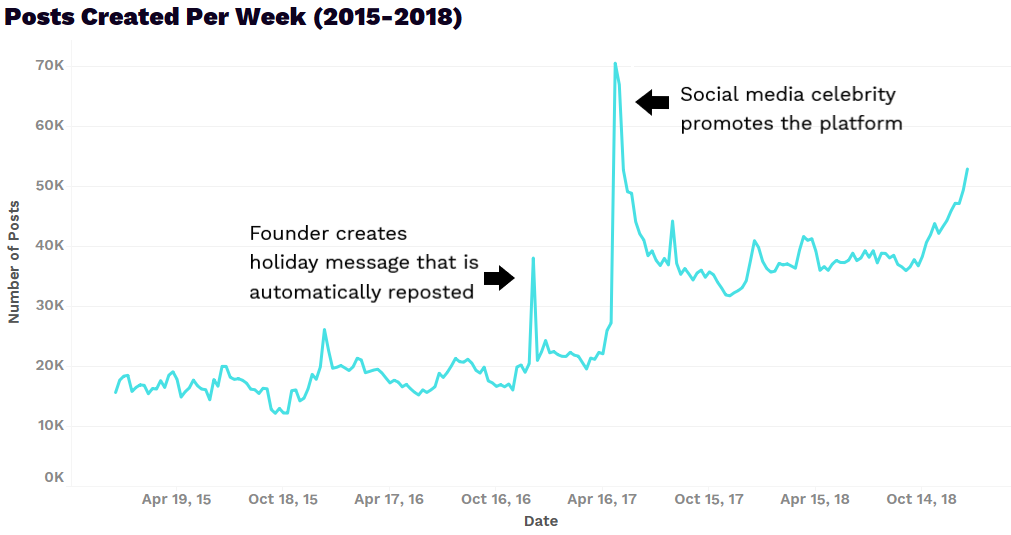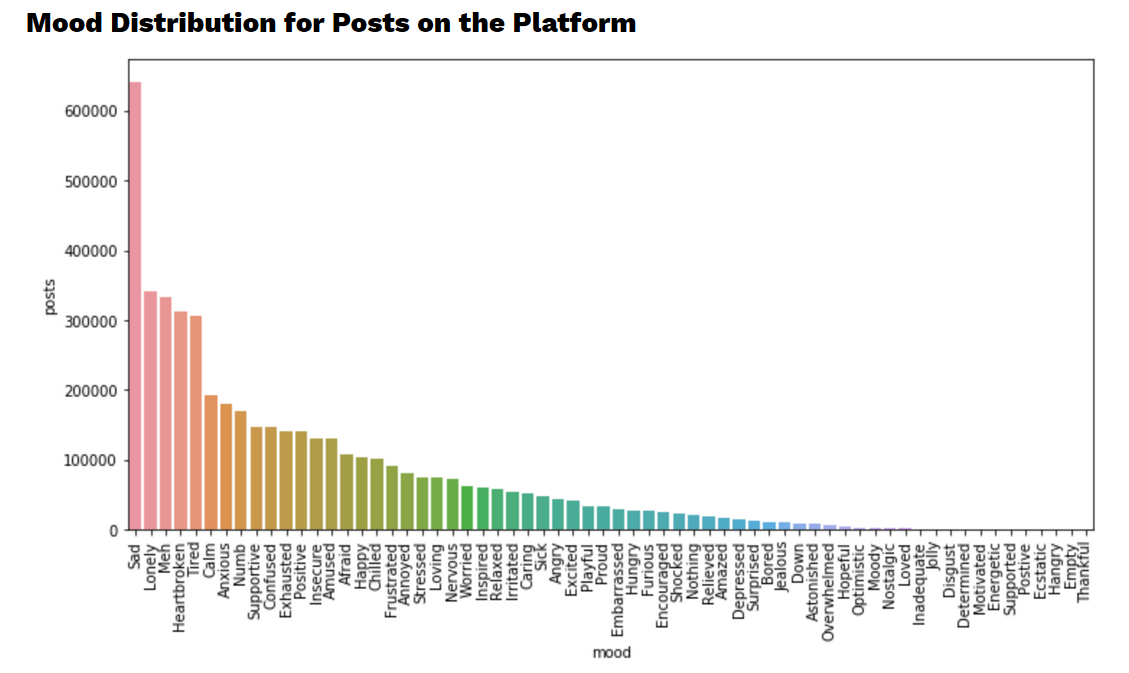Data Descriptives
How the Platform Works
On the online peer support platform we studied this summer, users who are experiencing distress, have a question, or are just looking to talk can create public posts and receive responses and acknowledgement. When a user first logs in, they see a feed of posts (similar to many other social media feeds) and can choose to either interact with a post or create their own.
If a user decides to post their own content, they are first prompted to choose a category for their post and to record their current mood. Users also have the option of specifying that their post may contain triggering content (in which case it is only revealed by users who select it) and electing to post anonymously rather than by username.
If a user chooses to engage with another’s content, they have the option of commenting on the post as well as clicking affective statement buttons (such as “like”). They can also “follow” the user or directly message them. The original poster can then return to their post and comment in response to other commenters, “like” the comments, “follow” commenters, or choose to move a conversation to the platform’s private messenger.
Data Descriptives: 200 Million Rows


Important Differences Between This Platform and Others
While the platform that we studied this summer is branded as a peer support platform, there are several key differences between this platform and other online peer support platforms that are worth discussion.
First of all, content on the platform is not limited to peer support: in fact, the platform functions more as social media with a mental health focus than what we’d typically associate with a topic-specific peer support platform. When we examined social media versus non-social media type content on the platform, we discovered that only about one third of the posts met our requirements for mental health content.
Secondly, while the platform has over 500,000 users, the number of administrators (employees of the platform) and moderators (unpaid trained volunteers) is less than 50. There are not, at least officially, any mental health professionals that engage on the platform or play a role in moderation.
Thirdly, while peer support is usually recommended to be used in conjunction with other types of treatment, rather than alone [1], we have no information on whether users of the platform are engaged with any professional support offline or on other platforms.
Lastly, while other research has utilized surveys and mental health assessments to measure peer support platform efficacy, our platform did not provide us with that type of data.
References:
[1] Mead, S., Hilton, D., & Curtis, L. (2001, February). Peer Support: A Theoretical Perspective. Psychiatric Rehabilitation Journal 25(2), 134-141. Doi: 10.1037/h0095032.
